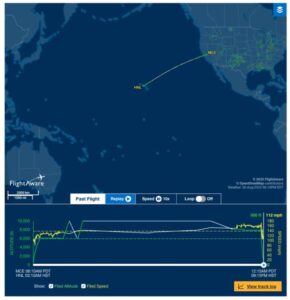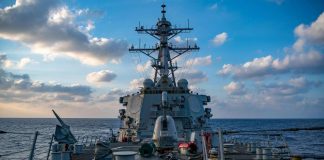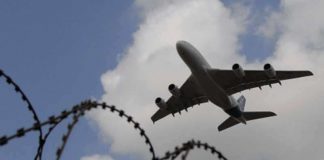AUGUST 31, 2022

Pilots know that a long cross-country solo flight is a requirement for obtaining a coveted FAA pilot’s certificate. But, with a recent delivery flight of a Cessna 172 Skyhawk nonstop from California to Hawaii, the term “long cross country” has new meaning. This one was “mammoth.”
The distance covered 2,190 nm in a tad over 18 hours. I’ll do the math for you. That’s an average of 116 knots for every one of those 18 hours in flight. And for those geographically challenged, let me remind you that this long ferry flight is over nothing but water. And… more water.
So, what is required of the fearless pilot that undertakes this type of work? According to this ferry pilot, Tom Lopes, his decades of experience as a ferry pilot helped him plan for this unusual flight, where the purpose was to deliver this 172 Skyhawk to the new owner, George Hanzawa of George’s Aviation.
The most obvious challenge would be to carry enough fuel on board. Typically, a 172 has a capacity of 53 gallons of avgas. In normal cruise with the Lycoming IO-360 engine churning along, you would expect a little over 600 nm in no wind conditions when the plane is topped off. That is, obviously, woefully short of the 2,190 nm from Merced Regional Airport in Merced, California, where the flight departed, to the Daniel K. Inouye International Airport in Honolulu, Hawaii, where it landed.
It’s normal for ferry flights to take on additional fuel in temporarily installed fuel bladders/tanks, with appropriate approvals. This was no exception for Lopes’ as it was reported that he had an additional 157 gallons of fuel onboard a temporary tank placed in the rear seat area, where he plumbed this fuel source to the existing fuel system. This reportedly took him a full three weeks to install but gave him about 210 total gallons of fuel for his journey. That would translate to a range of more than 2,500 miles, well within the distance he was traveling if the winds were favorable. The forecasts said they would be, and, thankfully, they were.
It’s also reported that Lopes had a team on the ground to track his flight, making suggested power setting changes, while monitoring his fuel burn. All of this while he reported his position hourly to Air Traffic Control—no radar coverage is available in the vastness of the Pacific Ocean.
But why not just ship the plane over water? That is, in fact, how it’s usually done. But in this case, the buyer elected to have Lopes ferry the aircraft since the thought of dismantling it, shipping it (which could take some time, especially nowadays) and reassembling it could introduce issues to the new aircraft—reassembly doesn’t always go smoothly. So, flying it over seemed to be the best solution and, we were told, about the same overall cost as prepping and shipping it that distance.
With the plane safely delivered to Mr. Hanzawa, George’s Aviation was able to remove the temporary fuel tank, reinstall the rear seats and have the plane on the flight line within 24 hours of arrival.
Now that’s a happy ending to a long cross-country.
Ferry Pilot Recounts Too-Long Cross Country Flight In A Pitts










































































































